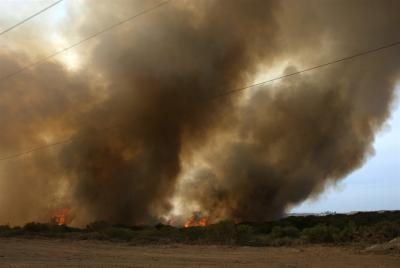RIVERSIDE, Calif.—Scientists know that wildland fire emissions play a significant role in the global carbon cycle and that its principal component – carbon dioxide – is a primary driver of climate change. But predicting and quantifying the effects of potential future emissions is a difficult process requiring the integration of complex interactions of climate, fire, and vegetation. The current state of knowledge, critical knowledge gaps, and importance of fire emissions for global climate and terrestrial carbon cycling is the focus of nine science syntheses published in a special issue in the Forest Ecology and Management journal titled, Wildland Fire Emissions, Carbon, and Climate: Science Overview and Knowledge Needs.
The issue reflects the collaborative efforts of a team of 17 scientists and associates from the USDA Forest Service Pacific Southwest, Rocky Mountain, Pacific Northwest, Northern and Southern Research Stations, George Mason University, University of Montana, and the private sector. The development of the series included planning workshops, regular meetings of all lead authors, significant collaboration among scientists from the five Stations and their associates, and both peer- and blind- referee review.
Following a science overview and summary of knowledge needs, the series of articles begins with consideration of fire and terrestrial carbon cycle processes and concludes with how emissions resulting from those processes affect climate. Between those starting and endpoints are six articles that sequentially focus on fire activity and burned area, fuels, consumption, emission factors, emissions, and atmospheric processes.

This prescribed burn in maritime chaparral at Vandenberg Air Force Base demonstrates that describing the burning vegetation is critical to reliably predicting the impact of wildland fire on greenhouse gas emissions and black carbon.
(Photo Credit: USDA Forest Service/ Joey Chong)
Dr. David Weise, research forester with PSW Research Station, served as co-chair of the team and took the lead in preparing the chapter describing wildland fuel. "The synthesis identifies the state of the science as of mid-2013 and identifies several needed areas of research which should be considered since wildland fire is an integral component of many North American ecosystems and is a significant land management tool used in the U.S.," Weise said.
Source: USDA Forest Service - Pacific Southwest Research Station